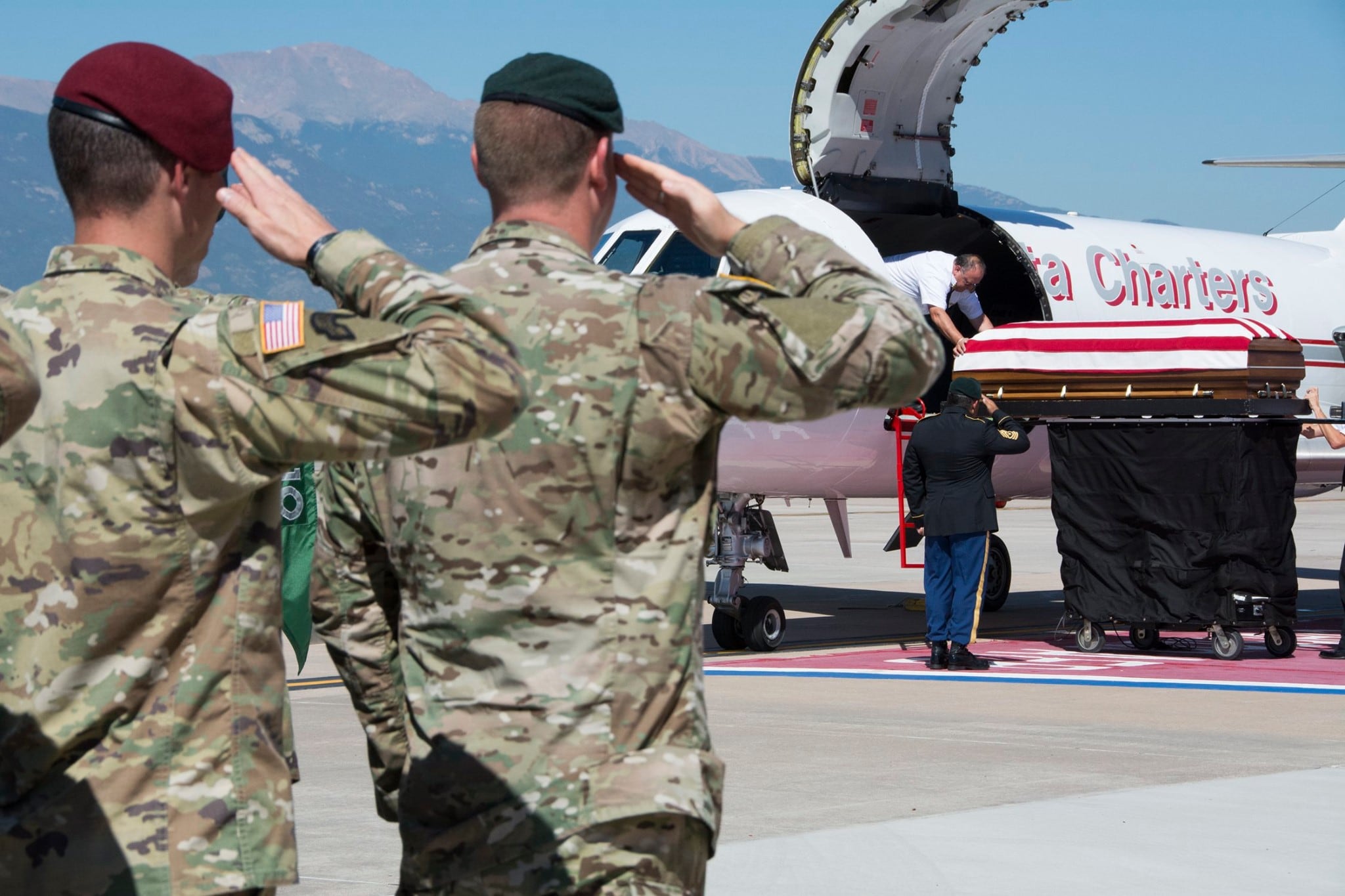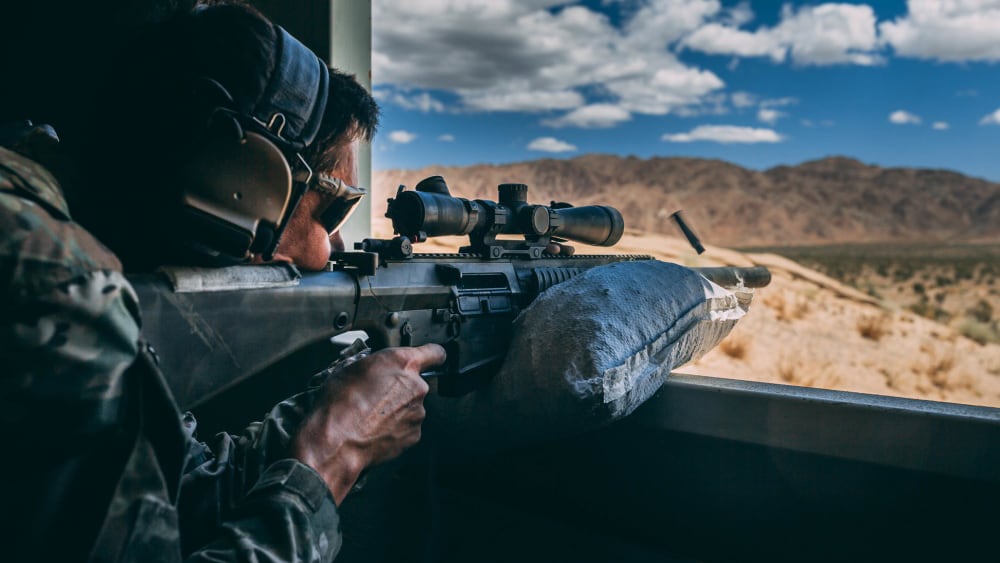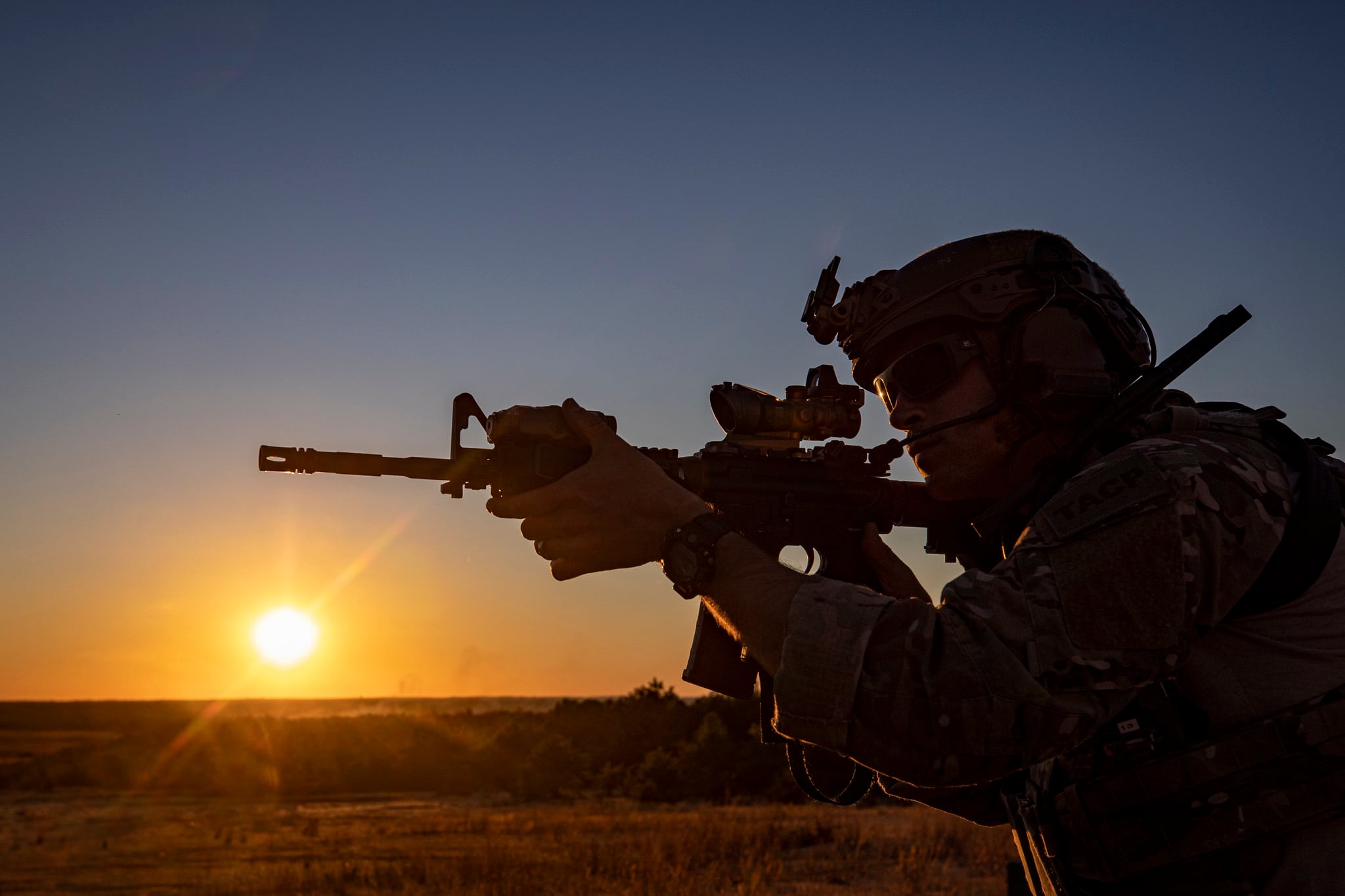With clear marching orders from the Defense Department to turn focus to competitors like China and Russia, the U.S. special operations community is at an inflection point. Kicking down doors in Afghanistan and Iraq will give way to more missions like training partners in Europe and Asia, and U.S. Special Operations Command could see a shift in its funding and oversight.
But that re-focus should not mean that special operations forces will take a back seat to traditional air, land and sea power, according to a report released Wednesday, as competitors are already using proxy forces and misinformation campaigns, both of which are right in the SOF wheelhouse.
“A successful U.S. national security strategy will require more from SOF and their partner nation forces—not less,” according to the Imperatives 2020 report from the Global SOF Foundation, a Tampa, Florida-based non-profit that advances “SOF capabilities and partnerships to confront global and networked threats.” The six-year-old organization, which is not affiliated with SOCOM, is holding a symposium in Washington on Wednesday.
Much of the future will depend on how Congress chooses to flex its oversight muscle, according to experts, both in terms of how the National Defense Strategy is executed and the role that SOCOM plays going forward.
“The biggest problem with DoD strategy development is it is tied to an antiquated organizational structure,” retired Brig. Gen. Don Bolduc, a retired special forces officer who last commanded Special Operations Command Africa and is now a New Hampshire Republican Senate candidate, told Military Times. “The department is in need of serious reorganization.”
More specifically, he said, the NDS focuses too much on peer competitors, while in some ways disregarding the threats still posed by Iran and North Korea, as well as a global counter-terror problem this still persists.
“The creators of the strategy were fully involved and responsible for 19 years of failure in Afghanistan 16 years of failure in Iraq, a failed Syria approach and now they want to abandon Africa.”
The challenge will be for SOCOM to keep proving its worth without the convenient counter-terror mission statistics of missiles launched and targets captured or killed.
“I don’t know how many times we’ve killed the No. 3 in al-Qaida,” a retired special operations officer and government official, who requested to speak on background, told Military Times in a Monday phone interview.
And for the better part of two decades, Congress was happy to fund SOCOM’s pursuit of terrorists. Now, some of that shine has worn off, and lawmakers are looking for a broader bang for those bucks.
“Many in Congress think there’s an imbalance in the SOCOM approach, and they see that the CT fight – the kinetic fight – is resourced sometimes at the peril of the non-kinetic,” he said.
But now, there is an opportunity to restore some of that balance, as counter-terror takes a back seat to foreign internal defense.
“They have small roles if we were ever to go to a kinetic conflict with one of these peer competitors, but I think it’s about building capacity with our partners,” the officer said.
Accountability and oversight
More than 30 years ago, Congress created a senior Pentagon civilian position to champion and oversee SOF community in the office of the defense secretary.
But the assistant defense secretary for special operations and low-intensity conflict, according to the report, doesn’t have the teeth to rein in or support SOCOM. It recommends elevating that position to a defense undersecretary, putting it on par with the Army, Navy and Air Force secretaries, who are fully responsible for the manning, training and equipping of their troops, to include everything from recruiting and weapons acquisitions to training and education.
“It’s been only marginally accepted by DoD and pretty much not at all by the services,” the retired officer said of the position.
Elevating the job could give it some teeth, he said, and head off the inevitable moment when Congress cracks down on on the Pentagon for SOCOM’s rampant spending and overemphasis on combat operations.
RELATED

“I had hoped the building would have acknowledged their responsibilities,” he said. “I think they could have mitigated Congress taking another step which could be more draconian.”
But that step could be coming anyway, he added, with something like the Space Force ― as in, uniting all of the services SOF units into a new service.
A less controversial option could be shifting SOCOM’s intelligence gathering operations, which take up much of its overseas contingency operations funding, to the defense under secretary for intelligence.
“If you don’t know what to do, you do what you know,” the retired officer said. “I don’t think that DoD has the ability to change themselves, and if Congress doesn’t do it, it’s not going to change.”
The Imperatives report also calls for Congress to review SOCOM’s force structure, to balance it with a tough recruiting environment and tight budgets.
“The downsizing of the services over the past several years has shrunk the available recruiting pool for SOF. Further, the eligible military-age population in the U.S. has shrunk as well, with fewer young men and women physically, emotionally, and psychologically fit for military service,” according to the report. “The cumulative effect is to reduce the number and quality of potential candidates for accession into SOF.”
This year’s White House budget request calls for a small bump of 700 personnel, bringing the total assigned to SOCOM to almost 74,00, or about 3 percent of the military’s total end strength.
The operational front
SOCOM is looking to drop nearly a third of its fiscal year 2021 budget request for investments and modernization into aviation and precision strike capabilities as the force preps for near-peer rivals and the continuing slog of counterinsurgency conflicts.
Out of the $3 billion budget request for SOF investments in 2021, SOCOM is sinking $724 million into precision strike and rotary and fixed-wing assets, according to the Pentagon budget request released Monday.
Roughly $106 million is slated for the procurement of five light attack aircraft in FY21 as part of SOCOM’s new armed overwatch program.
According to a February industry day announcement, SOCOM intends to field a fleet of 75 aircraft capable of reconnaissance, close air support and precision strike “in austere and permissive environments.”
Retired Air Force Lt. Gen. Thomas J. Trask, the former vice commander for headquarters SOCOM, told Military Times that aviation represented the “the biggest shortfall” within the special operations community.
But even modest new investment into aviation is likely to take a large bite out force structure, Trask explained.
While the military is shifting focus to the near-peer rivals, SOCOM is still equipping and training its force for the counter-terror and proxy conflicts likely to continue to dominate the world in a Cold War redux.
The defense budget request describes SOCOM’s light attack program as intended to “support operations and partner nations in the fight against terrorism.”
The Air Force recently dropped its plans to procure upwards of 300 light attack aircraft as the force focuses its attention on great power competition, Air Force spokeswoman Ann Stefanek told Defense News.
The service has already undergone some experimentation with AT-6 Wolverine turboprop planes from Textron and A-29 Super Tucanos. The A-29s are also used by Afghan forces combating Taliban and other militant groups.
Low tech, light, cheap and a fairly simple mission set turboprop planes will afford special operators on the ground reliable and affordable close air support in environments where combative forces have limited air defense capabilities.
It’s “competition through proxies where you’re going to use this capability,” Trask said.
American special operators are spread thinly across vast geographic terrain in the Middle East and Africa where the commando force is sometimes at the mercy of contracted air support for intelligence collection and medical or casualty evacuations.
DoD recently awarded contracts in February to Construction Helicopters Inc., Berry Aviation Inc. and Erickson Helicopters Inc., for continued contract aviation support to U.S. Africa Command to the total tune of just over $420 million.
In AFRICOM, U.S. special operators are carrying out accompanied partner nation missions and advising forces from Somalia to West Africa. A recent inspector general report detailed that there are nearly 500 special operators in Somalia.
The vast geographic distances strains resources and aviation support for special operators on the ground.
A cultural shift
At the same time SOCOM is getting itself in line with a new national defense strategy, it’s also at an existential inflection point. Two decades of wins on the battlefield has brought the SOF community an enormous amount of cache and prestige with both the national security establishment and the American people in general, but with that visibility has come some very public black eyes in the form of misconduct scandals, from unprofessional behavior to convicted war crimes.
A comprehensive review releases in late January points to a lack of leadership and accountability as one of the root causes of these issues. More specifically, when mid- and senior-level operators are leaving behind their units or their instructor posts to deploy over and over, they leave their charges to raise themselves.
“Knowing what is right requires a leadership presence and commitment and understanding,” SOCOM boss Army Gen. Richard Clarke told reporters Jan. 28. “And most importantly, training the leadership that is junior to them on those same things.”
RELATED

And in a culture that values closing with and destroying the enemy above all other achievements, seasoned operators become the standard bearers for those coming up in the rank, no matter how abhorrent their personal conduct.
The National Defense Strategy may force some of that culture shift, as the opportunity to pile up deployments to Iraq and Afghanistan becomes less likely.
The solution could come from the ground up, as leadership takes a look at their initial entry training.
“Several SOF career fields offer paths for direct accession and are segregated with other SOF candidates during initial entry training,” according to the comprehensive review, adding that “these programs possibly foster an unhealthy sense of entitlement as a result of special treatment and facilities.” which includes some exclusive perks and amenities for troops who come in on a SOF contract, and may have led to a sense of entitlement in the force.
It’s an issue the retired officer said he’d tried to get at during his time.
“Okay, I got it, we’re all special. Now get over yourself. You have some special and unique training, and that’s it,” he said. “There ain’t nothing about you that’s special. And that message hasn’t been carried across, clearly.”
SOCOM is also looking to reform its officer-enlisted power structure, as senior noncommissioned officers have come to run much of the show in special operations teams, despite the standard military order of officers creating and executing strategy while NCOs are responsible for proficiency and discipline.
Meghann Myers is the Pentagon bureau chief at Military Times. She covers operations, policy, personnel, leadership and other issues affecting service members.
Shawn Snow is the senior reporter for Marine Corps Times and a Marine Corps veteran.




